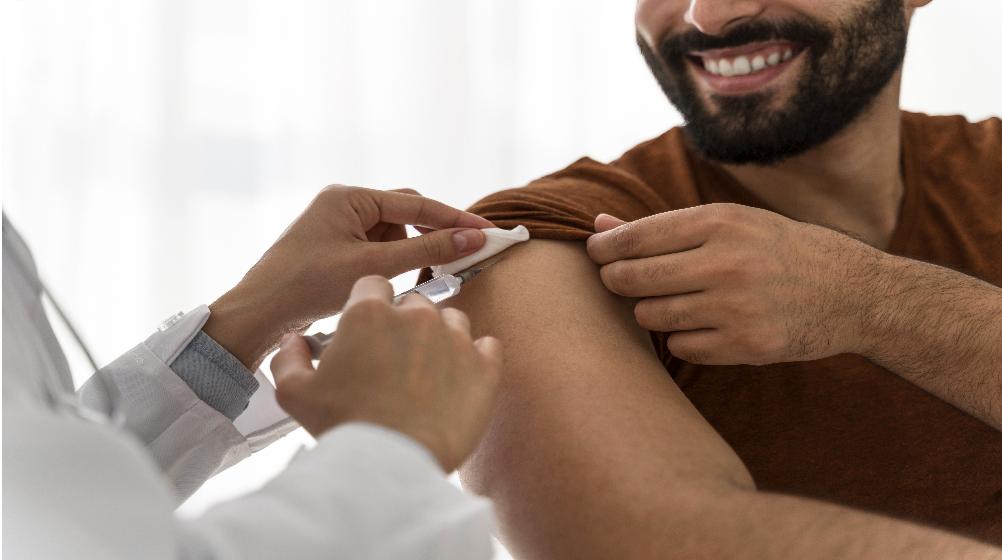Testosterone level for men, often called the “Male Hormone” level for men, is essential for men’s overall health and well-being. It affects various physical and mental health aspects, like muscle, muss, bone density, sex drive, cognitive performance, mood and energy level.
However, as men age, their regular testosterone levels start to decline and cause several unwanted symptoms, reducing their quality of life. You must be wondering what is the optimal testosterone level for men, right? Don’t worry! You’re not alone.
In this blog post, we are going to focus on details. Read it carefully.
Understanding Testosterone Level for Men
Testosterone plays a critical role in men, including the formation of the male reproductive system.
Throughout a man’s life, the testosterone levels or free T level fluctuate. Doctors measure testosterone levels by using a blood test, reported in nanograms per deciliter (ng/dL).
According to the American Urological Association (AUA) report, the healthy male T-level range between 450 and 600 ng/dL, with levels below 300 ng/dL considered as lowT level.
What is the Average Testosterone Level for men by Age?
Here is a breakdown of typical testosterone level in men by age:
-
Normal Testosterone level within 10 years of age: 2.5-10 ng/dL -
Normal Testosterone level between 10-18 years of age: 100-970 ng/dL -
Testosterone level at age 19 and above: 264-916 ng/dL
However, it is important to note that the testosterone levels in men typically decrease by about 1% per year after the age of 30.
What are the Signs and Symptoms of Low Testosterone Level?
According to the AUA, adult males without obesity or weight issues have low testosterone if their levels fall below 300 ng/dL. However, some untrained healthcare providers consider the level as low as 264 ng/dL to be within the normal range.
Low testosterone can lead to both physical symptoms and emotional or psychological issues, particularly when it affects sexual performance.
Here are some of low testosterone level symptoms:
-
Reduced sexual desire or low libido -
Difficulty in concentration -
Fewer spontaneous erections -
Erectile dysfunction (ED) -
Infertility -
Changes in Sleep patterns -
Reduced muscle mass and strength -
Anxiety and depression -
Fatigue -
Enlarged breasts in males -
Reduced bone density -
Lack of motivation
If you are experiencing any one of the above mentioned signs and symptoms, consider consulting with your healthcare provider, “What is the best testosterone level for a man?” They can provide you with the best guidance and order a blood test to check your free testosterone level.
How to Check Your Testosterone Level?
If you ever suspect that your testosterone level is too high or too low or experiencing any lowT symptoms, talk to your doctor immediately. They will recommend the blood test to accurately measure the hormone level.
The testosterone in your blood is basically bound to two proteins, one is Free or bioavailable testosterone and the other one is unbound and active testosterone.
There are two primary type of testosterone blood tests available:
-
Total Testosterone: This test helps you to measure both your free and protein-bound testosterone level in the blood. -
Free Testosterone: This blood test specifically measures the unbound testosterone level.
Apart from these, there are some other tests which may be conducted to gain a comprehensive understanding of hormone levels. Let’s check the following:
-
Luteinizing Hormone (LH) Test: This test measures the levels of LH, which stimulates testosterone production in the testes. -
Follicle-Stimulating Hormone (FSH) Test: Through this test, one can easily assess FSH levels, which play a crucial role in sperm production. -
Sex Hormone-Binding Globulin (SHBG) Test: This test determines the amount of SHBG in your blood, which binds to testosterone and affects the amount of free testosterone. -
Estradiol Test: Doctors recommend this test to measure the levels of estradiol, a form of estrogen that can be influenced by your testosterone levels. -
Dehydroepiandrosterone Sulfate (DHEA-S) Test: Evaluates the levels of DHEA-S, a precursor hormone that can be converted into testosterone and estrogen.
What is the Best Treatment to Normalize Your Testosterone Level?
Low T level or hypogonadism impedes the production of the body’s normal testosterone level. This may be due to the issues with the testicles or the pituitary gland that regulates this hormone production.
Recently, healthcare providers recommended patients with low T issues to undergo testosterone replacement therapy. This treatment is available as injections, patches, gels or pellets, to alleviate low testosterone symptoms in affected men.
The Bottom Line
Understanding normal testosterone levels is crucial for maintaining men’s healthy well-being. Generally, the good testosterone range in men lies between 300 and 1000 ng/dL. This level can vary due to age, lifestyle, and individual health factors. Keeping an eye on testosterone levels through regular check-ups can help identify potential health issues early on.
If you have concerns about your testosterone levels, it’s best to consult with a healthcare professional who can provide personalized advice and treatment options. Here at Precision Telemed we provide customized TRT plans and online consultation to reclaim your vitality.
Stop wasting time and get started on a better path today!




